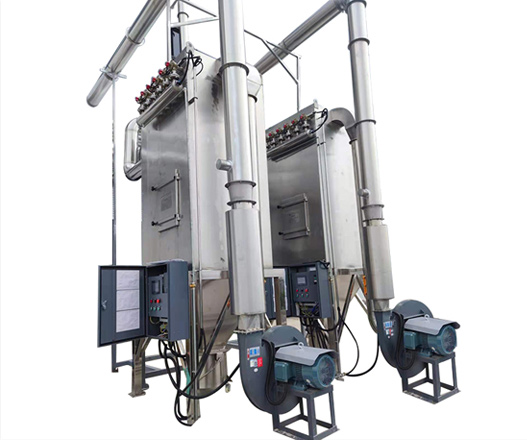Some people say lithium batteries are solid waste, while others say hazardous waste. Lithium batteries have always been listed as solid waste. In fact, commonly used lithium batteries generally do not contain toxic components, and their harm to the environment and human health is within the relevant value range, with relatively small harm. However, the disposal and collection of lithium batteries also need to refer to the Industrial Solid Waste Treatment Management Regulations and pollution related prevention and control requirements. In other words, not everyone can achieve dust removal and disposal of power batteries, and relevant qualifications must be obtained. Properly control safety and environmental pollution.
We first learned about a series of process flows of power battery dust removal equipment. The entire power battery dust removal system consists of main components such as shredders, grinders, magnetic separators, screening machines, grinders, density separators, and induced draft fans, which are put into production through multiple pipeline links. Lithium batteries decompose into copper particles, aluminum particles, iron, positive and negative electrode powders, and separators. The equipment has strong operational stability and has been optimized multiple times to simplify the process. Both the positive and negative electrode powder and the copper aluminum recycling purity required by the customer can meet the requirements. The material requirements are also very wide, such as the positive and negative electrodes of lithium batteries, power batteries, iron phosphate batteries, three cell batteries, etc., all of which can be recycled.

So how to remove dust and odors during the processing of power battery dust removal? In addition to the necessary treatment equipment above, the whole set of equipment will also be equipped with alkaline water spray, pulse dust remover, cooling system, dust collection system, air purifier adsorption filtration, chimney discharge, etc., which meet the emission standards. The entire process is carried out under negative pressure. The conveying device can also be set to be fully enclosed, ensuring no dust, no wastewater, no harmful gases, and no heavy metal pollution.
The sources of waste lithium batteries are very extensive, such as mobile phones, computers, various waste appliances, new energy vehicles, etc. Cascading or crushing waste lithium batteries can achieve the goal of recycling waste resources. To alleviate resource shortages and effectively address dependence on imported resources, we call for effective recycling of waste lithium batteries. This is also a very meaningful thing. Due to the increasing frequency of electronic product usage, global energy conservation and emission reduction, and the vigorous development of new energy vehicles, the downstream application proportion of lithium batteries has been increasing. In the past decade, the price of new energy vehicle power battery materials, whether ternary lithium batteries or lithium iron phosphate batteries, has fluctuated under supply and demand control. China's lithium reserves only account for 6% of the world's lithium mineral energy, and 50% of the world's lithium mineral energy comes from Australia. China's lithium resource production capacity is limited and needs to rely on imports, which is a worrying phenomenon. This directly affects the development of the domestic new energy vehicle industry. If you have channels to recycle power batteries, then closely monitor entering the power battery recycling industry. Recycling waste lithium batteries directly into lithium battery recycling equipment, through processes such as shredding, crushing, and screening, decomposes various recyclable precious metals, and the direct sales value is not cheap. The successful golden track is it.



